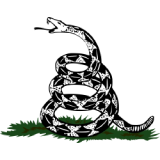Ukrainian military analyst Kostiantyn Mashovets examines the overall situation on the frontline, where Russia has managed to achieve tactical progress at the expense of intense loss of human life in “meat grinder assaults,” and suggests a way forward. Ukraine’s command should focus on improving the quality of artillery and, above all, infantry.
“It is mostly the infantry doing the fighting, and they mostly do so ‘on foot.’ The bulk of hardware is in tactical rear. The fact that every now and then a couple of tanks and APCs ‘carefully’ go out to ‘work’ on the front line does not change this,” says Mashovets.
He argues Russia’s format of a “bloody merry-go-round” of infantry plus mortars and artillery plays to its advantage, as it has vastly more soldiers than Ukraine and does not value their lives.
Mashovets believes Ukraine must find ways to force the enemy to stop. This can only happen if Russian losses of personnel multiply, exceeding the rate at which reserves are brought in. Technology-wise, Ukraine cannot yet cause such dramatic casualties among Russian forces. With limited stockpiles of weapons and ammunition, Ukraine has to seek battlefield solutions, Mashovets argues.
Allies’ military aid remains erratic, so Ukraine must focus on immediately improving its infantry, while continuing efforts to upgrade artillery, which according to him is limited in both quality and quantity, as Ukraine is very dependent on its allies, “who, in turn, do not have bottomless reserves of artillery and ammunition for us.”
Mashovets argues the “new quality” for Ukraine’s infantry should involve major improvements across three key areas:
- Training: Encompassing the entire gamut from psychological and moral preparation to tactical-specialized and weapons skills development.
- Weapons and gear: Available in sufficient quantities rather than just surpassing analogues used by rival Russian units. This applies to the whole range of equipment infantry relies upon, from tactical drones and mortars to communications, heavy machine guns, grenade launchers as well as body armor, vision enhancements, standard issue rifles.
- Command: From detachment (assault group) commander to brigade commander and regimental commander. This tactical-level leadership must not only be ready to organize and lead infantry combat under highly fluid conditions, but able to do so competently.
Mashovets warns that the Kremlin regime will likely resume high mobilization rates once internal political tensions ease. He emphasizes that voluntarily entering “meat grinder” battles like Bakhmut and Avdiivka plays into Russia’s strategy. Instead, Ukraine should focus on radically improving infantry quality to alter the math for the enemy.
When Russia realizes it must lose 15-20 soldiers to kill one Ukrainian, the logic of its mobilization-reliant strategy will crumble. Ukraine must strive for this infantry skill and deadliness through better training, weapons/gear, and tactical leadership. That is the key to stopping the repetition of grueling attritional battles on terms favorable to Russia, Mashovets says.
Russia’s “meat grinder” assaults in Ukraine
Over the course of Russia’s invasion of Ukraine, its military tactics have evolved from initial attempted blitzkriegs to more attritional, infantry-based assaults often described as “meat grinders” due to the high casualty rates. These tactics rely on waves of poorly trained troops, convicts, and Wagner mercenaries to probe Ukrainian defenses and seize small amounts of territory through tremendous loss of life.
Russia first employed disposable scout infantry to identify weaknesses in Ukraine’s defenses. Then, assault infantry would attempt concentrated attacks supported by armor, reminiscent of Soviet Deep Battle tactics. After high vehicle losses making armored thrusts untenable, Russia switched to World War I-style infantry assaults backed by artillery barrages. Attacks rely on quantity over quality – with legions of expendable prisoner “cannon fodder” from the Wagner Group sent forward to absorb casualties and exhaust Ukrainian units.
It is thanks to expending the lives of thousands of convicts that the Wagner group was after eight months of fighting finally able to seize east Ukraine’s Bakhmut.
Ukrainian commander Serhii Filimonov told in September that the Russians are unchanged in their tactics of attacking head-on without consideration for casualties, employing toxic gases disseminated from drones, improving their reconnaissance abilities, and acquiring many kamikaze drones.
This creeping, incremental advancement along the entire frontline is characterized by cynical disregard for soldiers’ lives in pursuit of minor territorial gains. Cities like Bakhmut and Avdiivka have seen months-long sieges based entirely on feeding attacks into the “meat grinder” to slowly deplete Ukrainian manpower and supplies. These offensives also aim to destroy critical infrastructure to make seized zones unlivable.
The evolution of tactics shows Russia’s willingness to leverage its advantage in human resources over technology losses. Infantry-based assaults are also cheaper, suiting Russia’s straining military budget. But Western provision of precision artillery and ample anti-tank weapons to Ukraine has complicated the success of Russia’s attritional approach.
Still, with limited maneuver warfare options left, Russia appears set to continue its ruthless, grinding and bloody strategy of attrition through the advantage of numerical superiority. The term “meat grinder” has thus become apt shorthand for Russia’s prevailing assault tactic.
Related:



